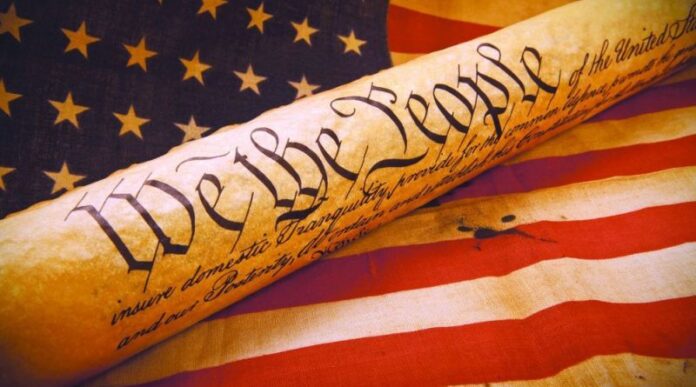Article II, Section 1, Clause 2
Each State shall appoint, in such Manner as the Legislature thereof may direct, several Electors, equal to the whole Number of Senators and Representatives to which the State may be entitled in the Congress: but no Senator or Representative, or Person holding an Office of Trust or Profit under the United States, shall be appointed an Elector.
Each State shall appoint . . . a Number of Electors . . . .
On November 4, 2008, Americans went to the polls and expressed their preferences among Barack Obama, John McCain, or other candidates. Many Americans probably thought that they were actually casting ballots for one of these men: We have gotten used to thinking of presidential elections as ones in which we vote directly for the candidates. Yet that is not really how American elections work. In reality, the only people elected on Election Day are representatives, called electors, whose sole duty is to represent their states in a subsequent election among states. This latter election—the real presidential election—determines the President of the United States’ identity.
Article II, Section 1, Clause 2 provides the boundaries for the appointment of these electors.
The Constitution provides that each state is to decide, for itself, how its electors will be chosen. During the first presidential election, states relied upon a wide range of methods. Several state legislatures appointed electors directly, on behalf of their citizens. No presidential election, as we think of it, was ever held in those states. Other states relied upon popular votes, but in different ways. For instance, Maryland directed that certain numbers of electors were to be elected from designated parts of the state. Virginia created 12 districts specifically for the election of electors; these districts were separate from the ten districts created for the election of Congressmen.
Today, every state relies upon a popular election among its own citizens. Most states then allocate their electors in a winner-take-all fashion based upon the outcome of these elections. For instance, when most Californians expressed their preference for Obama in 2008, these votes were translated into votes for a slate of 55 Democratic electors. If McCain had won the election, an alternate slate of 55 Republican electors, committed to McCain, would have been appointed to represent California instead.
The state’s authority to choose its own method for appointing electors is not in doubt. However, a few other issues remain unresolved:
First, may Congress step in if there is controversy regarding which of two slates of electors rightfully represents a state? Congress has taken such action in the past, and it claimed authority to act in the Electoral Count Act of 1887 and subsequent measures. However, some scholars argue that such federal laws impinge on the states’ authority, as outlined in Article II, Section 1, Clause 2.
Second, is a state’s discretion truly unlimited? An anti-Electoral College movement (National Popular Vote) hopes so. This group asks states to change their manner of elector allocation: Instead of allocating electors to the winner of state popular votes, participating states would allocate their electors to the national popular vote winner. These states would sign an interstate compact (a contract) to this effect. If enough states sign, the Electoral College would be effectively eliminated. NPV supporters reject the claim that their compact is an end-run around the Constitution. Still, the question will ultimately be tested in court. NPV could be enacted with as few as 11 states, whereas 38 states are required for a constitutional amendment. Such a process seems questionable, to say the least. Justice Thomas once observed, “States may establish qualifications for their delegates to the electoral college, as long as those qualifications pass muster under other constitutional provisions.” NPV may not satisfy this test.
In such Manner as the Legislature, thereof may direct. . . .
Another open legal question exists regarding the meaning of the word “Legislature” in Article II, Section 1, Clause 2. Does this use of “Legislature” refer specifically to the lawmaking body, or does it refer to a state’s entire lawmaking process? In the latter case, the legislature and governor must act together to determine the manner for appointing electors. Also, voter referendums would be able to trump the legislature in some circumstances. The Supreme Court has not directly addressed the question, but it has come down on both sides of the issue in other contexts.
The question may seem purely academic, but it has particular importance today because of NPV. In three states, the legislature has approved NPV’s legislation, only to be vetoed by the state’s governor. Will these vetoes stand, or will they be deemed irrelevant?
Equal to the whole Number of Senators and Representatives to which the State may be entitled in the Congress . . . .
States are allocated one elector for each of their representatives in Congress—both Senators and Congressmen. Therefore, each state automatically receives a minimum of three votes, as it is entitled to at least two Senators and one Congressman in Congress, regardless of population. Puerto Rico and the Island Areas are not given electors, as they are not states. The District of Columbia did not initially receive votes because it is not a state; however, the adoption of the 23rd Amendment in 1961 provided it with at least three electoral votes.
This method of allocation is consistent with the rest of the Constitution and echoes the states’ representation in Congress. A portion of a state’s congressional representation is based on population (the House of Representatives; one person, one vote). A portion is based on one state, one vote philosophy (the Senate).
But no Senator or Representative, or Person holding an Office of Trust or Profit under the United States, shall be appointed an Elector.
Some scholars believe that electors were meant to independently deliberate: The Founders wanted a body of wise men, entrusted with the power to select the President at a time when communication was slow and unreliable. Other scholars maintain that the role of elector was created only because the delegates to the Constitutional Convention left it to states to determine how their electors were to be chosen. Either way, the creation of an independent electoral body was thought to provide special benefits in the presidential selection process.
In Federalist No. 68, Alexander Hamilton wrote that the election process should minimize the opportunity for “cabal, intrigue, and corruption” in the selection of the President. Article II, he believed, accomplished this. Electors could not be bribed or corrupted because their identities would not be known in advance. Presidents would not be indebted to (potentially biased) legislators for their elections, thus reinforcing the separation among government branches. Separating the meetings of the electors (one in each state) would make these individuals less susceptible to a mob mentality. Finally, the selection of electors was tied to the people of a state, reminding the President that he owed his office and his duty to the people themselves.
Some of Hamilton’s logic has perhaps become less applicable, given the advent of mass communication and decreasing expectations that electors are to deliberate independently. But the state-by-state presidential election system created by Article II continues to provide many benefits for a country as large and diverse as America. The White House can only be won by a candidate who wins simultaneous victories across many states; thus, candidates must appeal to a broad range of voters in order to succeed. Successful candidates bring a diverse citizenry together, building national coalitions that span regional and state lines. Such a system is as healthy now as it was in 1787.





